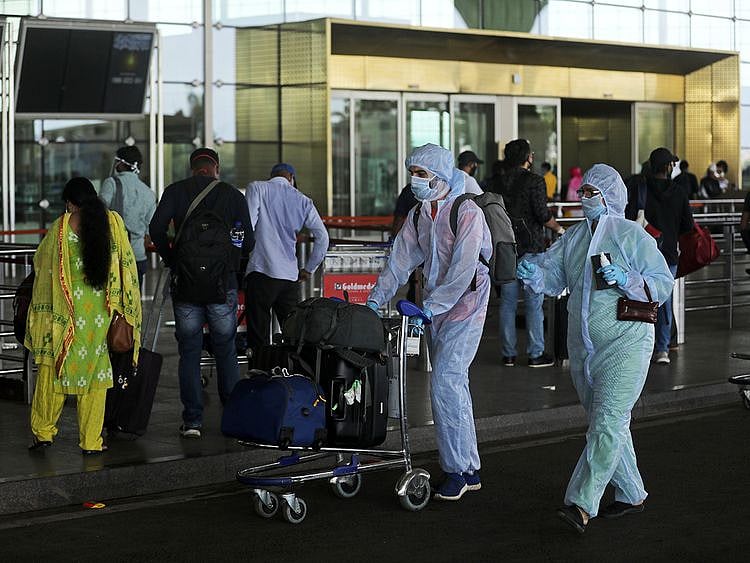Also In This Package
Abu Dhabi, Dubai among Top 5 cities for global talent
NFT artwork by humanoid robot Sophia up for auction
Made in UAE: From perfumes to composite aircraft parts
We must do our bit not to fall prey to phishing scams
Gold prices drop by Dh4 per gram in 10 days
High-voltage campaign in Kerala for Assembly polls
Dubai: The Dubai to Delhi route was the third busiest sector for the global airline industry during March, and just behind the Orlando-San Juan services and Hong Kong-Taipei, according to aviation data company OAG.
More than 146,000 seats were utilised in Delhi-Dubai flights, behind Orlando-San Juan’s 171,010 seats and Hong Kong-Taipei with 146,536 seats.
Typically, services from Dubai to Mumbai and to south Indian cities tend to be the most active on the UAE-India sector. But with Mumbai – and the state of Maharashtra - battling a torrid situation on COVID-19 infections, Delhi has filled the breach. As for the south India cities of Bengaluru and Kochi, the next few weeks could see more flights added – depending on the COVID-19 situation.
“There is anecdotal evidence to suggest the successful UAE vaccine programme has injected confidence in air travel across the region again,” said Saj Ahmad, chief analyst at StrategicAero Research.com. “We’ve seen flydubai and Emirates increase their network touchpoints over recent weeks.”
Bring back big jets
Most recently, Emirates said it was deploying the Airbus A380 and raising the number of flights to Amman from May 9. “The increase of capacity and frequencies are a testament to strengthened travel demand to and from Amman,” the airline said in a statement. The Dubai carrier plans to operate 12 flights a week to Jordan’s capital.
“The double-daily to Amman signals a return of demand - but what’s not clear yet is whether that demand is actually profitable,” said Ahmad. “Weaker pricing across the GCC has also helped entice would-be travellers to go flying again, though we’re still a long way off from anything normal.”
Improving numbers
While there are still restrictions in place on travel to some of the Gulf states, inter-region travel is the one showing the most marked rebound. As a fact, the route between Bahrain and UAE was the busiest in the Middle East during March, with more than 80,000 seats, while 77,860 seats were booked on the Dubai-Kuwait route, according to OAG.
Despite the negative trends, it looks like Emirates is going full steam ahead with its efforts to bring back passengers. This week, Dubai’s flagship carrier became the latest to talk about a ‘flight to nowhere’ after similar announcements made by operators like Air India and Singapore Airlines last year.
The special flight, scheduled for this month, will carry only fully vaccinated crew and passengers on-board. The one-off flight is a "unique event that not only celebrates the success of the UAE's vaccination programme to date, but also highlights Emirates' progress in vaccinating its staff and in particular its pilots and cabin crew," said Emirates.
Suez and air freight
The movement of goods between Asia and Europe was hit when a ship was stranded in the Suez Canal, a sea waterway that is responsible for 12 per cent of global trade. While some reports suggest that air cargo got a boost due to the disruption, that does not seem to be the case… at least for Gulf carriers.
“We don’t have enough information to determine if increased demand can be directly attributed to the Suez Canal, especially as it’s now been resolved,” an Emirates spokesperson told Gulf News.
Ahmad at StrategicAero’s Ahmad believes the Suez Canal episode will not have added much business in terms of air cargo demand. “Shipped freight quite clearly is slow and thus demand for next-day products would not be aboard such types of transport.
“To that end, the week-long snafus in the Suez Canal won’t have materially impacted air freight demand or operations to any significant degree, if at all.”
Sign up for the Daily Briefing
Get the latest news and updates straight to your inbox
Network Links
GN StoreDownload our app
© Al Nisr Publishing LLC 2025. All rights reserved.
